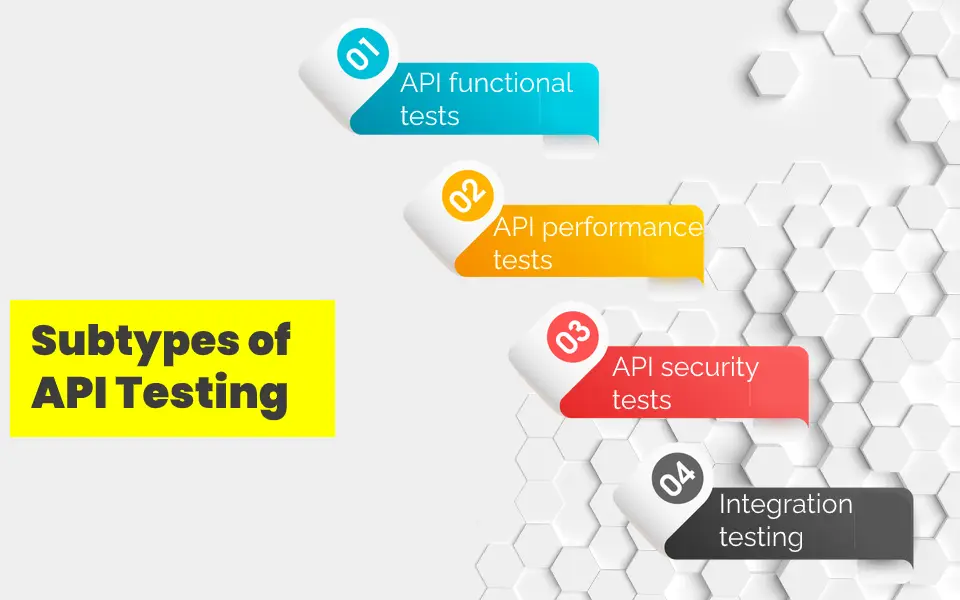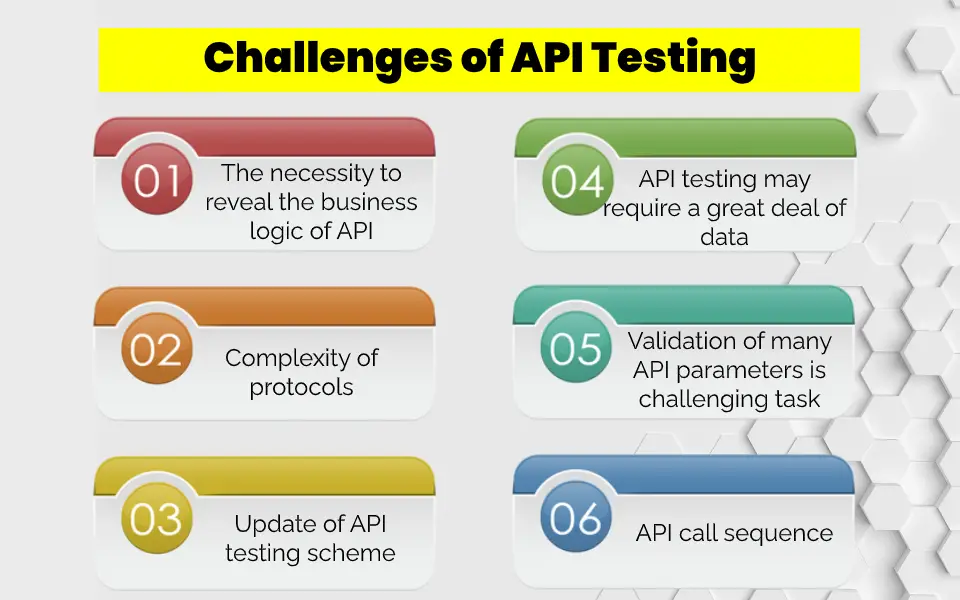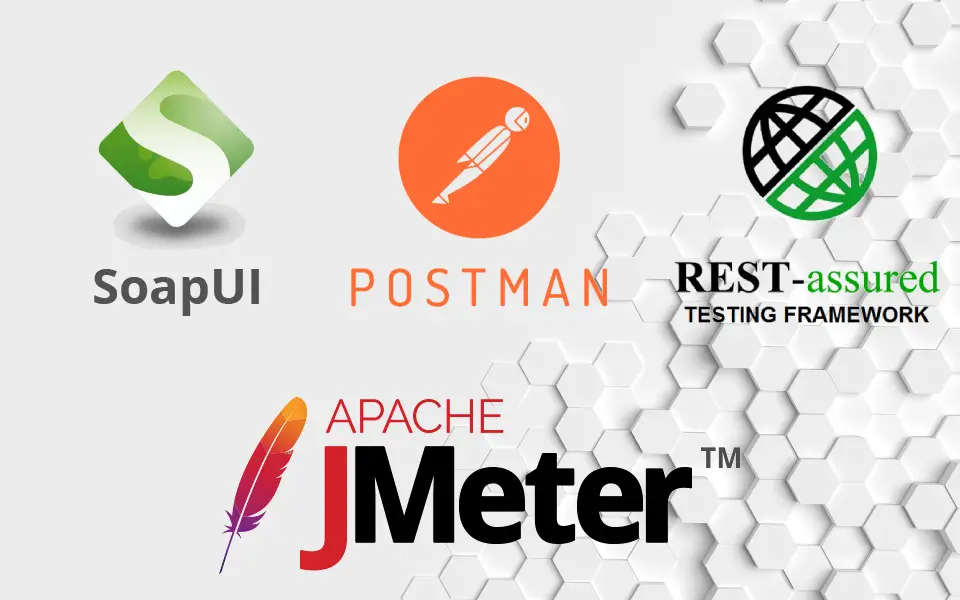10 minutes to read
How to Automate API Testing - A Step-by-Step Tutorial


Chief Technology Officer
The way software is built has undergone numerous changes. These days, applications are no longer monolithic and self-contained; they consist of numerous service components tied together with the help of APIs. Common users usually do not notice this, but APIs today are used in almost every application. So let's consider the API and its testing in detail.
What is an API?
An API is a piece of code enabling interaction and data transmission between various systems utilizing different programming languages and technologies or between different software components in a microservice architecture. Put it another way, thanks to APIs, functions of one application can be accessed and executed by another one.
To access certain data or functionality from another system, an app calls its API, specifying the way data or functionality must be given. In response, this system provides the requested data or functionality. The interface by means of which these two systems communicate is what an API stands for.
Several types of APIs are differentiated on the ground of the systems they serve for. These are web APIs, operational system APIs, database APIs, and remote APIs.
It is also worth mentioning RESTful APIs and SOAP APIs that are widely used these days. As its name implies SOAP APIs use Simple Object Access Protocol for data exchange, whereas RESTful APIs utilize for this purpose REST (Representational State Transfer) architecture.
What Is API Testing?
API testing implies sending requests to an API and getting responses that should be thoroughly checked for data accuracy, right status codes, as well as error codes. API testing mostly concentrates on the business logic and is conducted in the course of integration testing.
QA experts test APIs according to different criteria. They not only verify data in the output but also check response time, ability to withstand hacker attacks, API reaction to various failures, unusual inputs, and many others. In these terms we can speak about the following subtypes of API testing:

API functional tests
Functional testing verifies if an API actually functions in accordance with expected parameters, i.e. returns correct output for a certain input and properly addresses errors if the results do not comply with the estimated parameters. In this context, it is reasonable to make active use of either positive or negative testing. Whereas positive tests verify the proper API response to predictable inputs, negative tests check API reaction to wrong inputs.
API performance tests
It is essential to make sure that an API can withstand estimated workloads and check its behavior while being under extremely high workloads. In this case, QA teams imitate API calls with special tools to execute different types of performance testing.
API security tests
Security testing plays an important role in API testing since APIs are rather vulnerable and can be a loophole for cybercriminals to access sensitive data or gain control over an application. A combination of penetration tests, security tests, and fuzz tests must be executed to check API for loopholes, soft spots, and external threats.
Integration testing
This type of testing carefully inspects communication and interactions between different APIs, therefore its key goal is to assure that APIs are well-connected and do not cause defects in each other modules.
Why Is API Testing Important?
To provide a high quality of AUT, a QA team must check all its ins and outs and APIs are no exception as well. API testing is deemed to be indeed a great practice and the following facts can prove this.
Better product quality
APIs, like any piece of code, are subject to defects. As a result, API testing is as important as any other type of software testing. An issue in an API can have a detrimental effect. API testing provides QA engineers with more confidence that they have covered all potential software failures before moving a product to production.
Early defect detection
API testing does not depend on UI availability and therefore corresponding testing activities can be carried out at a very early stage of product development. QA engineers make sure that an API works as expected by providing corresponding inputs, in such a way they can be sure that the same requests will be properly processed while using software UI. Besides, possible defects can be fixed easier and faster at the API testing phase than later.
Overall cost reduction
This item is closely related to the previous one. As long as API testing enables QA teams to uncover bugs and defects at a very early stage of product development, a significant sum of money can be saved due to the golden rule that states that the earlier a bug is revealed, the cheaper its fixing costs.
Time efficiency
API testing takes up not so much time as functional GUI testing. The thing is that QA engineers just have to modify the parameters of API calls instead of filling in UI forms in case of functional GUI testing. It enables the QA team to reach higher test coverage within a comparatively short period of time.
Security concerns
Execution of API testing gives an opportunity to reveal security loopholes. For instance, specific parameters can be provided to imitate all possible phishing attacks and check API response to them.
Comprehensive performance check
The use of API implies vast data extraction and processing. Therefore to assure the appropriate performance of AUT in general, it is strongly recommended to check how much time it takes to obtain a response from an API. If response time doesn't correspond with requirements, the corresponding optimization should be made.
Convenience
Taking into account a broad range of automation tools, API testing can be rather easily automated to be run faster. Besides, the usage of JSON and XML files makes API testing independent of used programming language, i.e. for API test automation, you can choose any programming language according to your preferences, skills, and available tools.
Why Does It Make Sense To Automate API Testing?
Nowadays, applications actively use and heavily rely on APIs, as a result, API testing is an essential item of your testing plan allowing you to verify app behavior and business logic.
With the advent of Agile methodology, teams usually feel some pressure to deliver an application as fast as possible. Consequently, APIs usually are tested not deeply enough. Test automation is a fail-proof way to overcome a lack of time and achieve high test coverage.
Automated API tests can be run whenever needed and their execution takes less time than GUI test execution. Besides, it is much easier and therefore cheaper to maintain API scripts than GUI scripts.
Automation gives an opportunity to run API tests on an ongoing basis which, in turn, lets reveal possible logic-related bugs and maintain application security.
Steps To Automate API Testing
It may seem to be corn, but it is recommended to start work on test automation from the study of documentation in order to reveal API parameters. Besides, you can ask your development team about existing endpoints, validation limits, response codes, and errors that should appear in response to failed requests.
After that, you can consider an array of automation tools available on the market. Since API is language-independent, you can focus completely on the offered options and price.
As soon as you have made your decision on an API automation tool, you can proceed to the environment setup that also implies configuration of DB and server. As the environment is ready, check if everything functions properly by making an API call.
One of the key stages of API test automation is script development. In these terms, it is necessary to determine a scope of testing, by selecting and prioritizing tests that should be automated.
To check whether an API is up and running, you should develop scripts that consider:
The created scripts are run as soon as a new build is ready and get maintained when there is a corresponding need.
Challenges of API Testing

API testing may present certain challenges due to its specificity. Let's consider some of them in detail.
The necessity to reveal the business logic of API
As a rule, APIs have a broad range of rules describing the way they should be leveraged and implemented. These rules are determined by the general business logic. A vague understanding of API business logic and these rules cause ambiguity in the test goals.
Complexity of protocols
Communication and interaction with APIs are provided by means of protocols that are rather complicated and this can be an obstacle for efficient testing.
Update of API testing scheme
It is essential in the course of the QA procedure to carefully maintain the format of the data contained in either requests or responses. All updates associated with the new API call parameters should be counted in a testing scheme.
Test data management
API testing may require a great deal of data. Its maintenance as well as ensuring its reusability can be a serious difficulty for a QA team.
Parameter validation
Validation of numerous API parameters can be a challenging task as well. It must be checked whether all parameter data has a proper format, complies with stated values, length limits, and other requirements.
API call sequence
Rather often API calls must be made in a particular order to work properly, which may make a QA team face some difficulties. For instance, if a call to return the data about a profile proceeds this profile creation, the request certainly returns an error. An ability to track API call sequence can get indeed challenging when it comes to multiple-threaded software.
Top Automation API Testing Tools

There are a plethora of automation tools for API testing. Therefore, it will not be a problem to pick up the one that will meet your needs. We, in our turn, would like to present you a list of the widely used tools for API test automation.
Postman
Nowadays, Postman is an absolute leader among automation tools for RESTful API testing. It is indeed a perfect option for JS skilled automation QA engineers. This tool supports a lot of integrations and has a user-friendly UI enabling the fast creation of automated tests. Developed scripts can be pretty easily integrated into a CI environment.
Requests
Requests is a free and easy-to-use HTTP library supporting the Python programming language. QA experts consider Requests as an efficient tool with easy-to-digest guidelines, easy syntax, and a broad range of options.
REST Assured
REST Assured is a free Java library used to create scripts for RESTful API. It is a great option to automate functional tests for RESTful API services. However, it requires advanced coding skills.
Apache JMeter
At first, Apache JMeter was leveraged to execute load testing only. Today, this powerful tool also provides automation of functional testing and stress testing. It is suitable for testing both SOAP and RESTful APIs. Apache JMeter can be customized and extended thanks to its numerous extensions. Quick test execution and precise timing are among its advantages as well.
SoapUI
SoapUI is a tool used to automate functional tests for either RESTful or SOAP APIs. SoapUI supports the most various programming languages including JS and Python. One more merit is off-the-shelf plugins for the most commonly used CI servers.
Conclusion
Extremely wide use of APIs in modern applications makes API testing essential. Although APIs work under the hood, their functioning and proper integration affect product quality and, consequently, user experience. Besides, API testing is also important in terms of security as APIs can be leveraged as a loophole for cybercriminals. Therefore, one of the API testing goals is to reveal possible vulnerabilities and weaknesses. To make API testing more efficient, speedy, and cost-effective it is advised to implement test automation whenever it is reasonable and cost-effective.
